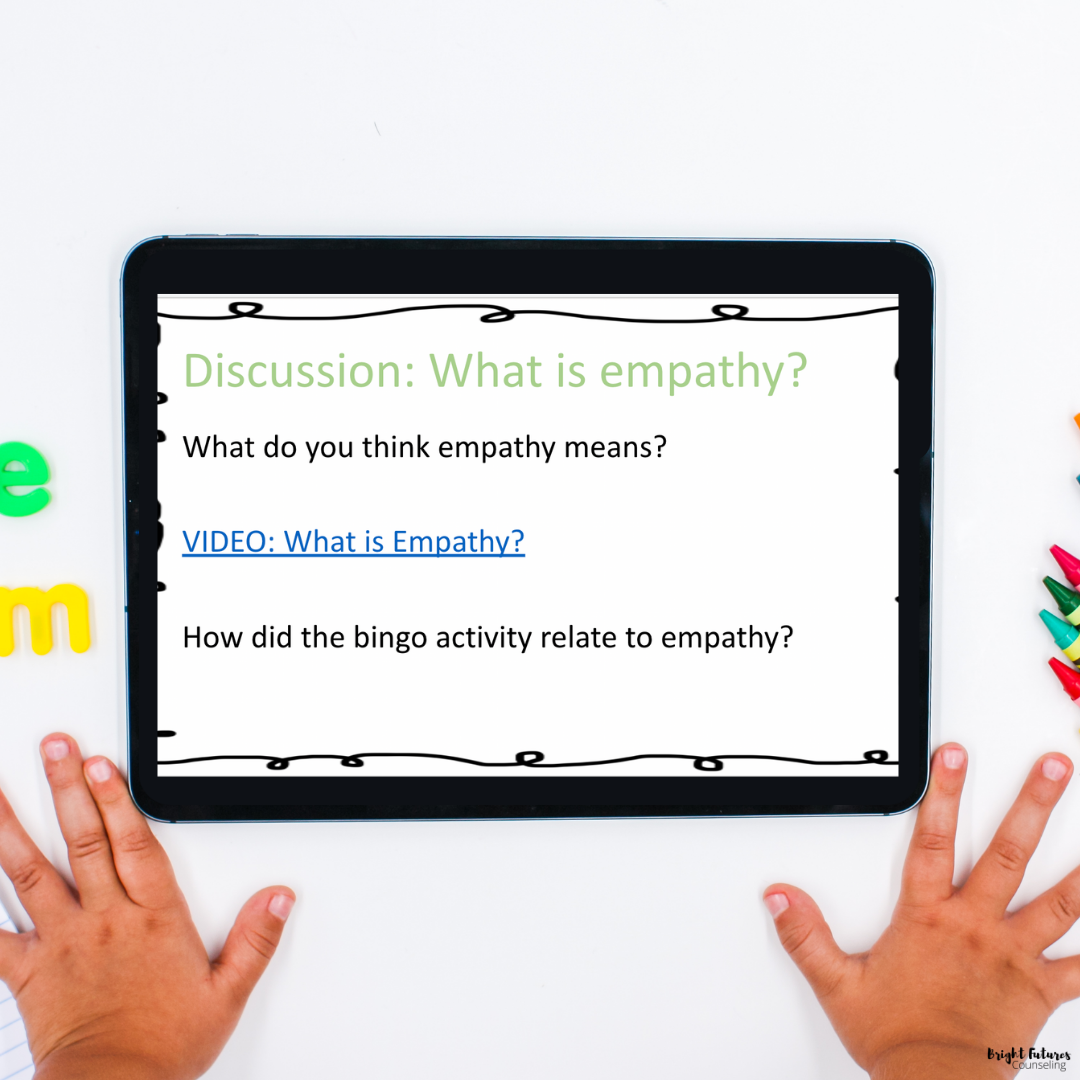My 5 Favorite Strategies to Teach Empathy to Kids
The dictionary defines empathy as "the ability to understand and share the feelings of another". Something I've commonly noticed in schools is that we tend to focus on getting students to understand and demonstrate kindness, but it's time we took it a step further with the teaching, learning, and demonstration of empathy.
Teaching empathy to kids can have many benefits, such as better mental and emotional health, a greater connection with their peers and educators, increased acceptance and tolerance of each other, better communication skills, promotion of social harmony, and the list goes on.
If you're looking for interesting ways to teach empathy to your students, these 5 strategies I use are sure to come in handy.
1. Teach Students to Recognize their Emotions
Many students fail to show empathy simply because they are unable to tell how another person might be feeling. When students are able to recognize and label their own emotions, they are slowly but surely going to be able to recognize similar emotions expressed by those around them.
While providing students with vocabulary is important, I love using this free Feelings Check Poster and anchor charts to help them figure out what an emotion (we go through all the common ones) looks, sounds, and feels like. Once they are able to understand that we all have emotions and that emotions are sometimes expressed by the words we say, they also learn that most other times it is through ones body language that they are more aware of the feelings of those around them. For example, when they see a classmate crying, they are able to identify and understand that the child must be sad. This provides them an opportunity to see how they can help that child. This is the first step towards teaching a child how to show empathy.
Wondering where to start? Get your students to guess the emotion with the help of this Inside Out Guess the Emotion Video. You can then move on to working on an "Emotions Anchor Chart" together.
2. Teach Perspective Taking
Once my kiddos are familiar with identifying their own and others feelings, I love to get them talking about why we feel these different feelings. A few important things they come to realize is that we all experience a plethora of emotions, there are no good or bad emotions, and it is possible to feel differently than another person about the same thing! Here's where perspective-taking comes into play.
Once, in an SEL lesson with my eager first graders, I divided the class into two groups and had them sit facing each other. I had each group take turns naming all the things they could see which were in front of them. This exercise got my students to see how we could be in the same room but we could be seeing totally different things/views depending upon how or from where we were looking at the room. It was then super simple to introduce them to the word "perspective" and we got into smaller groups to discuss if two different perspectives meant one was right and the other was wrong.
To reinforce the importance of perspective-taking, we watched this cute animated short film. Once we shared our thoughts, I pulled some activities from my Empathy Individual Curriculum..
With my upper elementary students, I also love using read-alouds to help them understand what perspective-taking means, for which The True Story of the Three Little Pigs by A. Wolf, is my absolute favorite!
3. Talk about Empathy Explicitly
Like any skill or attribute, empathy must be taught and practiced. Of course, it comes more easily to some children, but we can't expect students to automatically be able to show empathy. When teaching empathy to kids, it's important to explicitly talk about it. Explain what empathy is, why it's important, and give tangible examples of what empathy looks like and what it doesn't look like. This Empathy Guidance Lesson is my go-to. This is another No-Prep Empathy Lesson I enjoy using as part of my character-ed lessons.
To supplement a class lesson or if you're teaching virtually, you could use Empathy Boom Cards to check for understanding. And get my students up and moving, I love using this Empathy Scoot Game with them and they love it just as much!
4. Model Empathy
Now that your students have the knowledge and understanding of what empathy is, it's important for them to see it in action. As you show compassion, positive regard, and understanding when you interact with your students, they will recognize you showing empathy and will try to emulate you. Use teachable moments in the classroom to explain how a student or even a character in a story might be feeling in a particular situation. Listen actively when your students are sharing their thoughts with you and the class.
Validate your students' feelings. Ask the right questions that provoke students to look for verbal and non-verbal cues as to how a classmate might be feeling, and ask your students to suggest ways in which you could show empathy to that person. You'd be surprised at how empathetic your students can actually be!
5. Provide Opportunities to Practice Empathy
One of the first things I encourage homeroom teachers to do is to set up a "buddy" system in their class, where two students are paired together for the month/semester to help each other with their learning and to also look out for each other on the playground and on field trips. This gives students the opportunity of understanding their buddy and showing them empathy in the way their buddy needs for it to be shown.
Following my empathy-themed lessons with my first graders, I put up an Empathy Calendar on the class bulletin board. Students were encouraged to show empathy to their classmates throughout the day, and if they had found a way to do so, I encouraged them to come and let me/their teacher know and we used post-its to record this good deed on our Empathy Calendar. Even when the calendar was taken down, students continued finding ways to show empathy to those around them.
You can also use a school-wide activity to encourage empathy. Try organizing a charity initiative where students and teachers are encouraged to contribute educational supplies and food items to donate to an organization chosen by the students. It’s so inspiring to witness students demonstrate empathy towards those less fortunate than them!
What are your go-to ways of teaching empathy to your students? I’d love to know in the comments!
SHARE:













